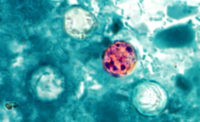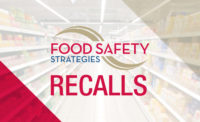The world is increasingly becoming more interconnected than ever before; this becomes clear with an examination of what is going on in today’s world. In an unprecedented turn of events, the shutdown of a single wet market [the Huanan Seafood Wholesale Market in Wuhan city/China where the coronavirus disease (COVID-19) pandemic is believed to be initiated and then spread to more than 190 countries] resulted in the shutdown of the entire globe. As of May 27, 2020, there are 5,734,838 cases of COVID-19, and 354,208 people have died worldwide. Other pandemics have also originated in wet markets. For example, in 2002/2003, the severe acute respiratory syndrome (SARS) pandemic was initiated in a wet market in southern China. About, 8,000 people were infected, and more than 700 people died, in more than 25 countries, by SARS.
Wet markets are marketplaces that sell affordable, locally produced fresh foods which include produce, meat, fish, and eggs. They exist in both developed and developing countries, but they are more common in developing countries. About 80 percent of the meat, milk, eggs, fish, and produce are sold in informal markets (wet markets are a major component in the informal market sector) in developing countries. Wet markets are essential for the economic growth and livelihood of millions of people (especially in rural areas), which include small-holder farming households, small traders, vendors, and consumers. Also, these markets are often popular tourist destinations which become attributed to the region’s cultural presence.
There are three different versions of these markets: a) those that do not carry live animals at all, b) those that carry domestic live animals, and c) those that carry live wild and exotic animals (wildlife markets). The majority of these markets, sell and slaughter live domestic animals in front of customers with unmonitored sanitary practices. A small number, especially in Asia (such as the Huanan Seafood Wholesale Market), sell and slaughter wild and/or exotic animals, including baby crocodiles, beavers, porcupines, pangolins, snakes, etc. In both types of live markets, animals are not only held in close proximity to each other but to humans as well. This creates the perfect breeding ground for a virus to be transferred. Therefore, it is easier for diseases in wild animals to pass into other animals and then infect humans (zoonotic diseases). It has been estimated that more than 75 percent of emerging infectious diseases are zoonotic diseases. In the last few decades, there has been an increase in the frequency of zoonotic disease outbreaks, including COVID 19, H7N9-AVIAN (2013), MERS (2012), SWINE H1N1 (2009), H5N1-AVIAN (2003), SARS (2003), and NIPAH (1999).
Besides disrupting our traditional way of life. These outbreaks damage the reputations in the countries in which they originate. They also result in significant economic disruption; the globe is facing the worst economic upset since World War II, because of COVID-19. It has been estimated that the negative outcomes of the COVID-19 outbreak could reduce global economic growth by about 24 percent annually. Global trade could also fall by up to 30 percent. Therefore, international public health organizations and consumers are calling for urgent action and demanding the closing of high-risk wildlife markets. The World Health Organization has announced that governments must rigorously enforce bans on the sale and trade of wildlife for food. Also, a survey was conducted by the World Wildlife Fund in March 2020, where about 5,000 people in five Asian countries (Hong Kong SAR, Japan, Myanmar, Thailand, and Vietnam) were interviewed. About 90 percent of participants supported governments taking action to eliminate wildlife markets. It is also worth mentioning that on January 26, the Chinese government announced a temporary ban on its wild animal trade, and on February 24, the government made that policy permanent regarding the trade and consumption of live wild animals for food.
The international food safety community should turn the COVID-19 crisis into an opportunity for strengthening food safety (improve sanitation/hygiene practices and food safety management systems) in global wet markets, subsequently avoiding similar future outbreaks. In general, traditional wet markets are poorly regulated and associated with poorly managed and maintained facilities. Therefore, they can pose (besides respiratory diseases) significant food safety hazards. In fact, foodborne diseases and zoonoses have become a major public health concern in these markets. From a food safety perspective, replacing wet markets with supermarkets and hypermarkets is a sound solution. However, this would have a dramatic effect on people’s ability to maintain proper nutrition; supermarkets mostly sell high-salt and high-fat processed food. Therefore, the best solution, in my opinion, at least in the short term, is to improve/modernize wet markets (to those that do/do not carry live animals; the wildlife markets must shut down) in developing countries to the level of farmers markets in developed countries. To do that, policymakers and other important stakeholders should be educated on the importance of enhancing the modern wet market. The modernization should be driven by consumers and enforced by governments. The private sector and other interested stakeholders must be involved in the modernization process. Donors should also assist; for example, the World Bank invested to improve the wet market in Vietnam. The governments of Singapore and Hong Kong have already implemented market modernization programs into some of their wet markets.
Developing countries should ban all kinds of wildlife markets and invest in market modernization programs, including a) a plan to develop and conduct an assessment system to determine the real needs of wet markets; b) improvements in physical infrastructures of wet market (such as separating live domestic animals, adequate water supply, handwashing facilities, sufficient and appropriately placed toilets, proper drainage, adequate light, ventilation, flow of customers, etc.); c) implementation of proper food safety management systems (such as HACCP), Good Manufacturing Practices, good food handling, and good hygiene practices; d) implementation of a One Health approach where human, animal, and environmental health must be considered; e) training of all actors in the wet market, including workers and managers, on basic sanitation and food safety processes; f) the development and implementation of effective inspection systems; and g) the establishment of effective traceability and recall systems.
Barakat Mahmoud, Ph.D., is an international food safety expert with 30 years of experience in food safety. He has provided technical assistance in food safety in several developing countries in Africa, Asia, Central America, the Middle East, and the Caribbean.
Resources
apps.who.int/iris/bitstream/handle/10665/43393/9241593938_eng.pdf?sequence=1.
fas.org/sgp/crs/row/R46270.pdf.
www.worldwildlife.org/stories/why-we-must-close-high-risk-wildlife-markets.



